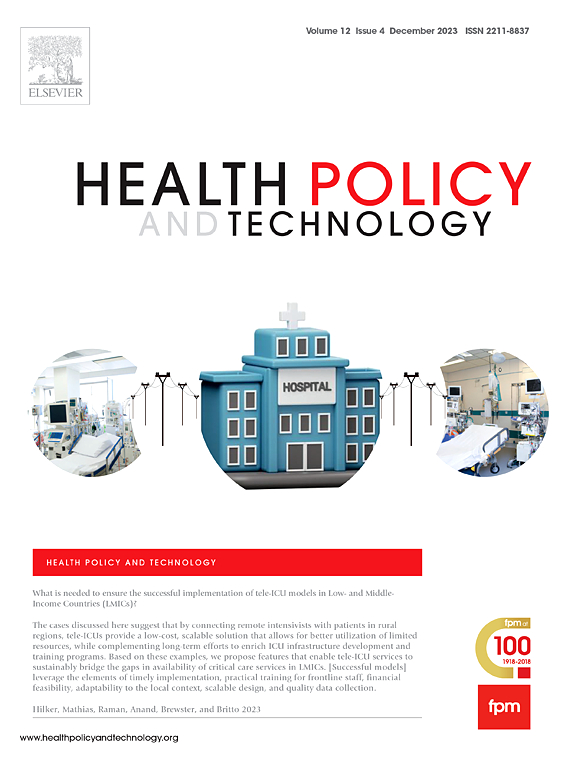Did COVID-19 reduce the digital divide? A systematic review
IF 3.4
3区 医学
Q1 HEALTH POLICY & SERVICES
引用次数: 0
Abstract
Aim
This research paper aims synthesise literature evaluating how the increased use of digital health during the COVID-19 pandemic has impacted equitable access to healthcare in the United Kingdom (UK).
Methods
A systematic literature review was adopted to get a broad overview of the impact of digital exclusion in the UK. To enable a structured analytical approach a three-domain framework was adopted ((1) digital access, digital literacy, and digital assimilation), and two specific groups were selected to investigate (older people and people with a lower socioeconomic status (SES)).
Results
This review identified 17 relevant papers, of which 5 considered SES and 16 age, concerning equitable healthcare access via digital health in the UK. Three-domain framework analysis found that increased use of digital health during the COVID-19 pandemic had digitally excluded some groups, particularly people with a lower SES. 25 % of included studies identified negative outcomes associated with equitable access for older people, a figure which increased to 60 % in the lower SES analysis. Digital access and literacy were identified as key issues in the lower SES population, meanwhile behavioural factors, such as bounded learning and hassle costs, were identified as a key barrier in older adults. Notably, this review identified some studies where these barriers were effectively overcome, meaning that digital health was able to improve care access and experience for some older adults. This study also identified some cases where the use of digital health supported care to be effectively prioritised.
Conclusion
Digital inclusion must become a higher policy priority in the UK. In the meantime, health systems should be mindful of potentially digitally excluded groups and ensure alternate modes of care (e.g. in-person and telephone) are effectively prioritised for those that need it most.
求助全文
约1分钟内获得全文
求助全文
来源期刊

Health Policy and Technology
Medicine-Health Policy
CiteScore
9.20
自引率
3.30%
发文量
78
审稿时长
88 days
期刊介绍:
Health Policy and Technology (HPT), is the official journal of the Fellowship of Postgraduate Medicine (FPM), a cross-disciplinary journal, which focuses on past, present and future health policy and the role of technology in clinical and non-clinical national and international health environments.
HPT provides a further excellent way for the FPM to continue to make important national and international contributions to development of policy and practice within medicine and related disciplines. The aim of HPT is to publish relevant, timely and accessible articles and commentaries to support policy-makers, health professionals, health technology providers, patient groups and academia interested in health policy and technology.
Topics covered by HPT will include:
- Health technology, including drug discovery, diagnostics, medicines, devices, therapeutic delivery and eHealth systems
- Cross-national comparisons on health policy using evidence-based approaches
- National studies on health policy to determine the outcomes of technology-driven initiatives
- Cross-border eHealth including health tourism
- The digital divide in mobility, access and affordability of healthcare
- Health technology assessment (HTA) methods and tools for evaluating the effectiveness of clinical and non-clinical health technologies
- Health and eHealth indicators and benchmarks (measure/metrics) for understanding the adoption and diffusion of health technologies
- Health and eHealth models and frameworks to support policy-makers and other stakeholders in decision-making
- Stakeholder engagement with health technologies (clinical and patient/citizen buy-in)
- Regulation and health economics
 求助内容:
求助内容: 应助结果提醒方式:
应助结果提醒方式:


